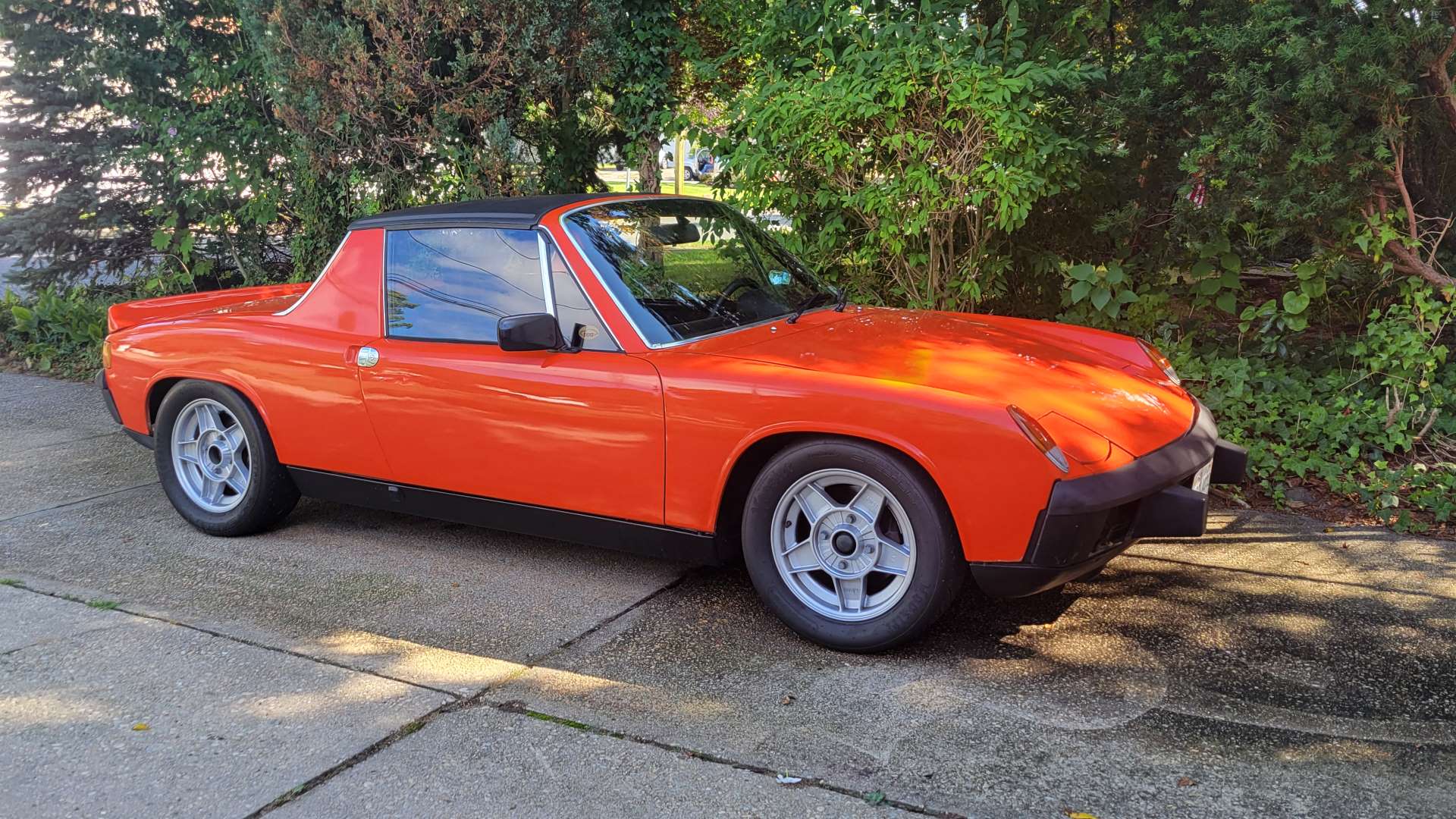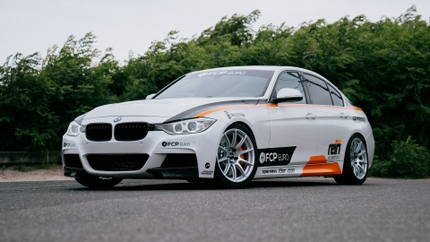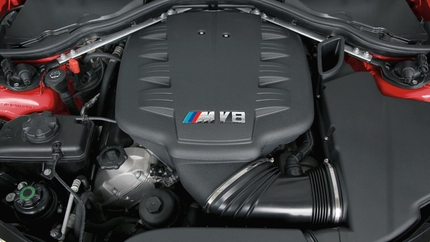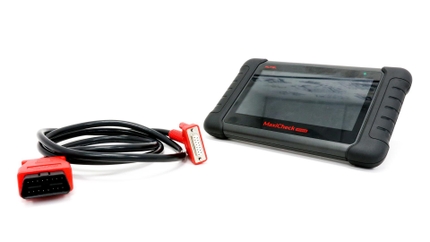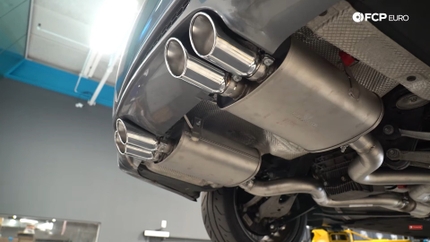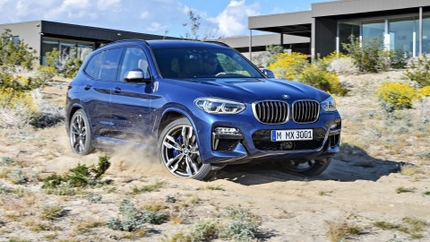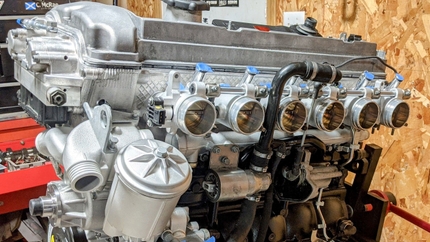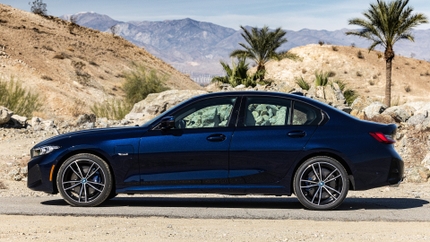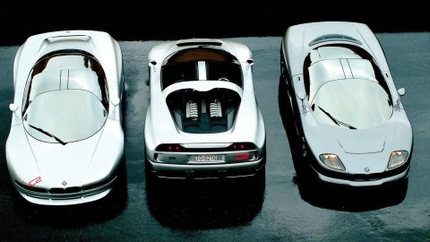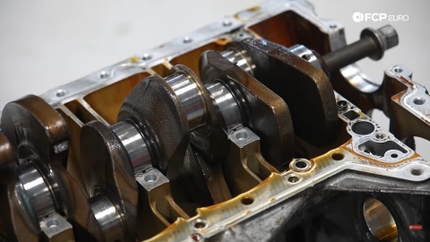- 09/17/2021
- 8 Min Read
- By: Christian Schaefer
Used Cars You Should Buy That Haven't Skyrocketed In Value During The Pandemic
The age of electrification is upon us, folks. The EU has placed a ban on new gasoline-powered cars after 2035, and the manufacturers have already begun to introduce the groundwork for their electric futures. Electric cars are great for what they do, but the extreme weight and size of the battery packs make for heavy cars devoid of noise and feel. Unfortunately, the joys of grumbling V8s and heel-and-toe downshifts are doomed, and the market has begun to notice. Seemingly stemming from the electrification and the influx of Pandemic money, enthusiast vehicles of all kinds have exploded in value. Well, not all of them. Some models, whether unloved or forgotten about, seemed to slip through the cracks. As prices took off everywhere, these models stayed grounded and within reach, just as they were before.
Read about cars that have skyrocketed in value during the pandemic
Volkswagen Mk5 GTI

VW’s everyday hatchback for the sporty driver is always in reach, no matter the budget. Eight generations in, there is a lot to be said about the GTI, some bad but almost overwhelmingly good. The perpetual classic has stood the test of time and assumed the role as the hot-hatch benchmark for decades as competitors have come and gone. The fifth-generation, or Mk5, GTI was lauded when it hit the scene as it brought proper quickness and fun back to the hot hatch after the rather disappointing Mk4, reminding everyone what the GTI is supposed to be. These days, it sits likely at the bottom of its depreciation curve and still offers a surprising quick ride in a usable, everyday package.
The 2006-2009 Mk5 GTI used a turbocharged, 2.0L inline-4 cylinder engine mounted transversely in the engine bay. A six-speed manual or six-speed DSG gearbox sent the engine’s power through the front wheels. Between 2006 and the first half of 2008, the GTI zipped around using the EA113 2.0T FSI engine (BPY), which produced 197 horsepower and 206 lb-ft of torque. It’s a fairly robust engine without too many flaws, though the couple it has do require opening it up. Camshaft chain tensioners and balance shaft assemblies aren’t uncommon failures on the EA113. Listen for any clattering on startup; any noise could indicate something wrong inside the engine. The high-pressure fuel pump is driven off of the camshaft, and the follower used to ride it can suffer from a lack of lubrication. Products like LIQUI MOLY's MoS2 and CeraTec have been proven to extend the life of the EA113’s internal issues greatly. Check the intake camshaft lobe responsible for driving the pump regularly every 10,000 to 30,000 miles, depending on how hard you drive your GTI. The harder you drive, the more often you should check.

Halfway into 2008 through 2009, the GTI received the first generation of the EA888 TSI engine (CCTA). Power numbers remained the same, as did the displacement, but it is quite different under the hood. Engineered to be simpler and more robust than its predecessor, the EA888 in the Mk5 GTI is a powerhouse. Slap on some bolt-on parts and a tune, and you’re pushing 50% over stock power without blinking. VW currently still uses EA888 in its third generation in the MK8 Golf R, making 315 horsepower. However, there are still things to be cautious about. The early engines suffered from timing chain and balance shaft failures similar to the EA113 before it. PCV system failures were also a regular source of headaches, though VW’s latest revision should solve any issues.
It wasn’t just the engines that made the Mk5 better than its predecessor; it also had to do with the suspension and chassis. This GTI is built on the PQ35 chassis, utilizing a multilink independent rear suspension for the first time in a GTI. The rear suspension, matched with retuned dampers up front, eliminated a large majority of the Mk4’s understeering issues. More chassis improvements include a 35% increase in torsional rigidity, a two-inch longer wheelbase, and a track width widened an inch at both ends. Inside the chassis, a bigger interior with better quality materials and the classic tartan seats were standard. The golf ball shifter remained for manual models, though nothing like that was available for the DSG. With all the newest models full of technology and touch screens, the Mk5 blends the relatively modern with the analog; free of flashy buttons and excess tech while still offering creature comforts any modern vehicle should have.

The GTI recently launched its eighth generation, leaving many to upgrade to it. For a much lesser sum, you can grab yourself the Mk5 and have all of the usability with a bit less power. Expect to pay between $8-10,000 for one with some miles on it. Both gearboxes are great for daily duty, though the DSG will be nicer in traffic. A majority of the cars came with the classic tartan interior, so that isn’t anything special. Find the best one you can with complete service history. Both engines have oil consumption issues because of the PCV system, as well as intake manifold issues. Their internal issues are also a cause for concern, so be wary and ask questions about them. And lastly, check for regular maintenance. The EA113 needs its timing belt and water pump service every 80-90,000 miles; oil changes on both should be done within 5,000.
Porsche 944

These hatchbacks are true Porsches, no matter what anyone says, with a near-perfect weight balance and underappreciated handling. Their value in the Porsche market has come a long way in recent years, causing their monetary values to rise as well. But the price increase has been relatively slight, and the 944 remains at a very attainable price point. That’s excellent news for any European car enthusiast looking to get in at the ground floor of Porsche ownership.
Porsche introduced the 944 as a middle model, slotting between the basic 924 and the expensive 924 Turbo. Debuting as a 1983 model in the US, Porsche took the existing 924 body and beefed up the fenders and quarters to fit larger wheels and brakes. A Porsche-designed 2.5L inline-4 cylinder that produced 161 horsepower was under the hood, and it sent its power to a transaxle at the rear. Halfway through 1986, the 944 received an updated interior, larger oil sump, larger gas tank, and minor suspension revisions. 1987 saw the 944S hit our shores, utilizing a 2.7L with a 16-valve dual-overhead-camshaft cylinder head to give it 26 more horsepower than the base car. Two years later, the only naturally aspirated 944 available was the S2, using the same 16V inline-4 now punched out to 3.0L. A five-speed manual transaxle was standard on every 944, though a three-speed automatic gearbox was also available.

For decades, owners of 944s have known that it is the superior chassis for outright handling performance compared to the 911. The front-engine, rear transaxle layout gave them a near 50/50 weight distribution which helped them keep up with the quicker 911s in the bends. Either chassis makes a great race car in normally aspirated or turbocharged form. But not everyone will want to push their sports car to the limit, and that’s alright. Vintage cars aren’t always the safest with their lack of safety equipment, so it’s good that not every 944 is without that stuff. Both airbags and Bosch ABS were optional extras for the normally-aspirated 944s. Without that safety equipment, 944s are very usable as weekend cars. Their back seats have enough space for smaller passengers, and the sizable rear hatch leaves plenty of room for a weekend’s worth of luggage.
The Porsche market is hot, and the 944 is no stranger to that. However, they were so cheap previously that their current going rate between $7000 and $12,000 for driver-quality N/A models is still within an arm’s length of their pre-pandemic prices. On the other hand, the 944 Turbo has gained significant value since the Pandemic began. When looking at examples, previous maintenance records are vital. The non-turbo engines are all interference engines, so the condition of their timing belt and its components are critical. Higher mileage and more neglected examples likely have their original suspension bushings. Replacing them isn’t very costly and will significantly improve the handling feel and help eliminate any clunks in the suspension. Rust issues aren’t pervasive with them, but it is still something to check.
BMW Z3 Roadster

BMW’s Boxster fighter has aged into an ideal beginner sports car. They turn heads, sound great, and handle even better; what more do you need? As analog sports cars have exploded in value since the pandemic began, Z3 prices have stayed relatively the same. Even the cleanest examples go for less than hammered M3s from the same era, making the Z3 an exciting option at a low entry point.
The Z3 was the first of the nineties European roadsters to debut, a two-seat roadster with a four or six-cylinder engine under its huge hood. The M44 engine was first introduced stateside in 1996. It made 138 horsepower from its 1.9 liters of displacement, just enough to keep the Z3 on par with the Miata of the era. Within two years, the four-cylinder was dumped in favor of two inline-6 cylinder engines. Available in 2.5L or 2.8L with 170 horsepower and 190 horsepower, these engines separated the Z3 above the Miata, slotting it nicely between the cheaper Japanese competitor and the more expensive Boxster. Post-2000, the Z3’s biggest engine grew to 3.0L, while the 2.5L received a bump in power; 228 and 184 horsepower, respectively. Backing up those engines was a five-speed manual transmission, or an automatic transmission with four or five speeds, depending on the model year.

The Z3 really began to shine when opened up on some twisty backroads. The front suspension from the E36 and the rear from the E30 gave the roadster a tight and composed ride capable of carving mountain roads and soaking up freeway bumps. Between the steering wheel and the tires was a steering rack with a quicker ratio than the 3-series it was based on, for better steering response. Its small size meant that the weight was kept low, too, coming in around 2900 lbs. Their reliance on 3-series suspension parts also means there’s a huge aftermarket for suspension tuning and upgrades for the Z3, for when the stock components just aren't enough.
BMW produced a couple of other versions of the Z3; the coupe and the Z3M. The coupes hit the market in 1999, debuting an odd body shape that has since become known lovingly as the “clown shoe.” The Z3M debuted that same year in the US and was equipped with the M3’s 240 horsepower S52 engine and more aggressive suspension. Only the non-M roadsters have seemed to retain their pre-pandemic pricing, as the exclusivity of the M-badge and quirky looks of the coupes have led their values to increase steadily. The best Z3 roadsters to look for are the later examples between 2000-2002: these feature revised bodywork and a choice of 2.5L or 3.0L inline-6 cylinder M54 engines.

Search around Facebook marketplace or craigslist, and you’ll find Z3s everywhere. The least expensive examples will be the four-cylinder early models with automatic transmissions, around the $6,000 mark depending on the condition. The bigger the engine, the higher the price with the Z3s. The 3.0L examples with manual transmissions sit around the $10,000 mark, so there isn’t much between the top and bottom range for driver-quality cars. Expect the lowest mileage examples of the roadsters, mid-range coupes, and the Z3Ms to cost you low to mid-teens. BMW made nearly 300,000 Z3s, so do yourself a favor and find the best example you can. Look out for water damage inside the cabin; clogged drains are common and will back up into the interior. Externally, check the top for holes, watch for sunbaked headlights, and ask for engine and cooling system maintenance records. Oil leaks and cracked cooling system plastics are prevalent.
Audi C5 S6

The second generation of Audi’s S6 has stayed at relatively the same price point for the last five years or so. The C5 A6 debuted in the US for the 1998 model year, and the S6 followed a few years later, in 2000. The mid-sized Audi sedan was a ripper in its day, competing with the M5 and E55 AMG for the crown of the quickest European sedan. Twenty years on, the C5 S6 is an affordable V8-powered sedan or wagon with all-wheel drive. What’s not to love?
The C5 S6 left Ingolstadt with only one engine option: a 4.2L double overhead camshaft V8. 5-valves per cylinder and a variable-length intake manifold made of magnesium helped the S6’s new V8 pump out 340 horsepower and 310 lb-ft of torque. Sophisticated for its day, it also used individual ignition coils per cylinder and drive-by-wire electronic throttle. Though other countries received a six-speed manual, buyers in America were only given the “Tiptronic” five-speed ZF 5HP automatic. The closest we got to shifting our own was through the steering wheel paddles and manual mode that the Tiptronic provided. Both gearboxes sent their power to all four wheels through a Torsen center differential as part of Audi’s Quattro system. There is a clear and proven path for a manual swap for the mechanically inclined, though that can be pretty pricey. 
The differences between the A6 and S6 are apparent from the moment they’re together. The A6 already had small flares around the wheels, so the S6 made them even bigger to house the 17” by 8” Avus wheels, the classic Audi performance wheel of the era. The hood and fenders were made from aluminum to shed weight, and a unique grille and decklid spoiler was fitted. Inside, leather-covered the seats and door panels unless the optional Recaro seats were fitted instead.
Any Volkswagen Audi product from the turn of the millennium has a penchant for check engine lights and constant issues. The S6 is no stranger to that, though it is better than some of its siblings. Fortunately for the C5, its V8 didn’t receive the troublesome timing chain system of the later V8 fitted to the S4; instead, it uses a timing belt that won’t cause any issues when appropriately maintained. Unfortunately, the “Tiptronic” automatic transmission was plagued with constant and expensive problems. The S6s also suffer from window track failures, water accumulation in the passenger’s footwell from clogged drains, and LCD failures in the instrument cluster.

Why the Audi C5 S6 Avant isn't appreciating is beyond us. Production numbers were incredibly low for the wagon version, at 882 cars landing on US soil. Good driver quality automatic-equipped examples with some service records and around 100,000 miles sell for around the $11,000 mark. Six-speed converted models are out there in decent numbers and will sell for a few thousand more than an automatic in similar conditions. Service records are vital for these models. The engines have a few plastic pieces that can break, causing leaks that are tough to get to, and the variable intake manifold has a series of plastic parts that can also fail, so ensuring that maintenance has been done before purchase is crucial.
Mercedes-Benz SLK (R170)

Mercedes-Benz has a history of producing fantastic roadsters. The SLK230 Kompressor, sold by Mercedes between 1998 and 2004 in America, while often overlooked, is another roadster that deserves to be in that lineage. The SLK, standing for Sportlich (Sporty), Licht (Light), and Kurz (Short), was another contender to the European roadster segment already filled with the Porsche Boxster and BMW Z3. In its day, it had no problems keeping up with the quicker BMW in the corners and had less polarizing looks than the Boxster. Mercedes had a hit with the R170 SLK, and the motoring world took notice.
Mercedes fitted two non-AMG engines into the R170 SLK during its run in America. The first was the M111, a 2.3L supercharged inline-4 cylinder used in the SLK230 Kompressor. It was available throughout the entire production run in the US, though it received an update at the beginning of 2000. The early engine, dubbed the M111.973, produced 190 horsepower and 207 lb-ft of torque. The M111.983 is the updated version, using a slightly higher compression ratio (9.0:1 v.s. 8.8:1), coil on plug ignition, and a different ECU to make 194 horsepower and 207 lb-ft of torque. Beginning with the 2001 model year, Mercedes offered the SLK320, which used the M112 3.2L V6. It produced 215 horsepower and 229 lb-ft of torque; the modest increase over the Kompressor was enough to get the 0-60 time under 7 seconds. Both engines were available with automatic and manual transmissions. The manual option was a five-speed unit until 2001 when Mercedes opted for a six-speed; the automatic transmission was always a five-speed box.

The big selling point for the SLK back when it launched was its “Vario Roof.” A folding hardtop in Mercedes speak, none of its competitors had anything like it. Heavier than a fabric top, the Vario Roof rounded out the more luxurious standard interior that the Mercedes offered while also helping it achieve a 50/50 weight balance. Included in the base price were an alarm system, leather everything, power seats and mirrors, dual-zone climate control, and sporty, white-faced gauges. Externally, the standard Mercedes silver adorned many of SLK, as did black and white. But there were some very un-Mercedes-like colors, including Designo Orange, Sunburst Yellow, and Bahama Blue Metallic. While those colors weren’t very popular in their day, they’re now bringing more money because of their exclusivity. Matching those exterior colors were some truly wild two-tone interior packages. There is a good chance some interior pieces have started to shrink and peel away or have come loose. The sun was a killer for these interiors, and many have not stood the test of time.

For those of you dreaming of owning a fun Mercedes roadster sometime soon, you’re in luck. Current SLK prices are just about where they have been for the last few years. Very nice driver quality cars with under 100,000 miles, good service history, and no outstanding areas of concern sell for right around the $10,000 mark. Running examples in worse shape can go for half of that. Brightly colored examples with manual transmissions will bring a few thousand dollars more because of their exclusivity to the silver, black, and white models in the same condition. Look out for any water damage in the interior and ensure the top is in good working order; some seals in the hydraulic rams used to actuate the top can fail and prevent operation. You’ll be able to tell if there’s been a failure by examining the “headliner” on the top; the oil from the rams will stain it. The M111s and M112s are generally very reliable, never needing major internal work, just maintenance. However, the SLK is still a Mercedes, so parts aren’t the cheapest. Do your best to find the best example you can afford.
For most, the past two years have been a torturous ordeal filled with confusing data, lots of politics, and a general lack of fun. To make matters worse, many of us watched previously accessible vehicles ascend into the stratosphere for reasons currently unknown. Thankfully, there are still plenty of fun and usable cars out there for reasonable prices. Will they shoot up in value in the future, too? Who knows, so get them while you can. If you think we missed out on a no-brainer for this list, let us know in the comments below. Subscribe to our YouTube channel and follow along on the DIY Blog for more daily content!

